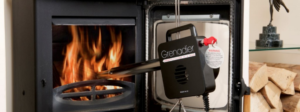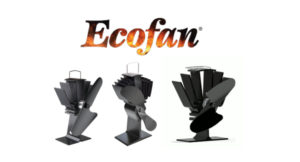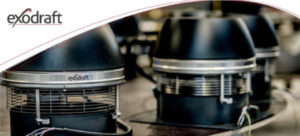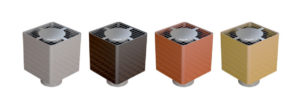The Grenadier Electric Firelighter is guaranteed to light any solid fuel fire, including wood, coal and smokeless fuel within minutes. It is an Award winner. Without matches, paper, sticks or chemical firelighters. The secret lies in the powerful, concentrated heat which is directed onto the fuel by the built-in fan. The fuel quickly reaches burning point, getting fires going quickly, efficiently and easily, this results in the fire reaching peak efficiency in the shortest possible time.
Many customers use their Grenadier for pre-warming problem flues before lighting the fuel.
The Grenadier has a versatile stand which is easily adjustable to the correct height and angle for your fire. The stand has a wide base for stability and is both sturdy and lightweight.


Chimneys need to be swept in order to allow free passage of dangerous combustion gasses. Regular cleaning of the chimney will remove soot and creosote, helping prevent dangerous chimney fires. Cleaning the chimneys regularly will also ensure that your wood-burner continues to perform well. Chimney sweeping will remove bird nests, cobwebs and other blockages.
Chimney Sweeping frequencies will depend on a number of factors, such as, the type of fuel you are burning, the duration of use, the moisture content of the fuel and the type of chimney you have. The guide for chimney sweeping frequencies when burning wood is quarterly when in use, and when burning coal, it is recommended that the chimney is swept annually.
Some stove handles and air controls get very hot. Please take care when operating the stove. Heat resistant gloves will protect you from burns whilst you operate the stove and re-load the fuel.
To clean the painted surface, when cool use a soft brush or lint-free cloth. Do not use wet methods. You can overpaint most marks and long-term wear. Please visit our Showrooms where we always have range of products to keep your stove looking fresh.
Feel like you need to sit almost on top of your stove to receive the full benefit? Why not expand the area of heat from your wood burning stove with an Ecofan? Ecofan’s sit on the top of your stove circulating warm air further into your home.
Other products may look similar but just do not deliver as well as the original Canadian Ecofan. They are covered with a 2 year warranty.
The benefits of an Ecofan include:-

A small layer of ash should be left on the fuel bed when you are lighting your Wood Burning Stove.
Open the air controls on your stove. Place a firelighter in the centre of the firebox. Place the wood kindling (around 6-8 small pieces of dry softwood timber) on top of the lighting material.
Lay some larger pieces of Well Seasoned Wood or Kiln Dried Logs on top. Make sure that the logs have been split and they are no larger than 40mm square.
Light the fire lighting material and close the stove door (or leave slightly ajar for a very short spell).
Once the fire has caught you can then continue to add larger pieces of wood or solid fuel to the fire. The door can now be fully closed.
Adjust the air vents according to the Manufacturer’s instructions.
Chimney fans from Exodraft. Always in control over the chimney draught regardless of the weather conditions or other factors influencing the nature draught.
The Chimney fan is installed on the top of the chimney and creates a negative pressure in the flue. It therefore ensures that the flue gases are extracted up the chimney rather than into the room. The fan control enables you to adjust the chimney draught to suit your needs, so you can enjoy the full comfort of a warm wood burning stove.

A Draftbooster chimney fan ensures that your wood-burning stove can be lit without problems. It helps provide good and environmentally friendly combustion. Just as putting more wood into the stove can be done with no problems, minimizing smoke in the room.
A Draftbooster chimney fan reduces particles and smoke in the room as well as soot deposits on the windows of the wood-burning stove.
Installing a Draftbooster chimney fan is extremely easy and can be done without skilled assistance.
With a Draftbooster, you get the full benefit and enjoyment of your wood-burning stove. You light the fire and use it without hassle.

In many cases, yes, you can. You will require a flue for the removal of smoke and combustion gases. It will need to be twin walled insulated steel flue which will need to be swept regularly just as a chimney would. There will be number of considerations such as; recommended distances from combustibles and non combustibles, for both the stove and flue, the exit through the wall/ceiling, the distances from ceiling joists, the exit through the roof and length of external flue.
Is your stove is struggling to get going? It is because it is at low temperatures? When your stove is cold, is the draw not as satisfactory as it could be? FlueCube could be the answer.
FlueCube creates a positive draw. As opposed to a standard cowl or cap, FlueCube decreases the time it takes for your stove to reach its optimum temperature.
By the time 100 degrees centigrade is reached, your stove is burning at 15 pascals such that you can turn the air vents on your stove down. This efficiency in getting your stove to the optimum temperature means that problems such as downdraft are minimised and fuel effectiveness is maximised, burning off soot and keeping your flue cleaner.


If your property was constructed before 1966 it is strongly recommended that your chimney is lined with a liner suitable for a solid fuel appliance. After this date chimneys were typically constructed using clay or concrete liners. Depending on the condition of the liner and the ability to make a gas tight connection between the stove and the liner it may be advisable to put a new flexible stainless liner in. Another consideration is that the diameter of the clay liner may be too great for closed a solid fuel appliance like a stove.
A fire will burn too quickly if there is an excessive air supply. If you find that this is the case please check that the door is closed properly and that all vents and seals on the stove. Door seals on stoves do need to be replaced on stoves due to wear.
Leaving the vents fully open for long periods of time can also cause the fire to burn too quickly. Once the fire has been lit you need to keep an eye on the stove until the fire is established. Once it is established adjust the air controls accordingly.
Check to see that the baffle plate located internally at the top of the stove is positioned correctly and has not deformed.
Excessive chimney draw can also be a problem if you find that the fire burns too quickly.
If the fire burns too slowly, this is usually caused by poor chimney draught. Trying to burn too much fuel or burning wet/damp (unseasoned logs) is also another issue. Check to see that there is sufficient air supply into the room and that the air vents are not blocked.
With the air control technology available on all stoves now, blackened glass is generally caused by one of three factors. These factors are:
Burning wet / damp (unseasoned logs) fuel;
Underfiring the stove;
Air vents are closed – Slumbering the stove for long periods, such as overnight burning.
Stove glass can be cleaned with special glass cleaners. There are various types of Stove Glass Cleaners available in our Showrooms.
The paint on a new stove needs to be cured (hardened) on all new stoves. The new stove will need to be fired moderately for the first few firings, as this will ensure that the heat resistant paint is hardened. Once the paint has cured it is then possible to fire the stove more vigorously. During the curing process the paint may develop a obnoxious smoke and smell for the first few firings. This is normal. Make sure that you open all doors and windows in order to ventilate the area. Sometimes this can trigger some smoke / fire alarms. Don’t panic this won’t last for too long.
When the stove is over-fired the colour of the stove can change. Serious over-firing will change the colour to a reddish colour. If this is the case you are burning the stove too hot. The stove thermometer/flue gas thermometer will assist you in familiarising yourself with the stove temperature.
“Well Seasoned” wood will typically have been left to dry in a sunny, well-aired space for one or two summers and kept dry over the winter in a log store. Radial cracks and bark that comes off easily suggest well-seasoned wood; better still, check with a moisture meter. Do not burn treated waste wood (e.g. old furniture) as it can emit harmful fumes. Burning good quality wood is very important – kiln dried wood, particularly ash, beech and birch, burns particularly well but whatever the species used, the moisture levels should be no more than 24%.
Believe it or not; you could have too much heat generated from your stove!! It is therefore important that you buy the right size of stove for the room. As a rough guide, 1kW of heat will be sufficient for 14 cubic metres. Try out our simple calculator below to see which stove would be recommended. Simon or Szab will be happy to discuss this with you when we provide your free no-obligation quotation.
Use our new Stove Output Calculator by clicking here
| SQUARE FEET (between) | CUBIC METERS (between) | SIZE OF STOVE |
| 1500 – 2500cf | 40 – 70 | 5 kw |
| 2000 – 5000cf | 55 – 140 | 8 kw |
| 3000 – 7500cf | 85 – 215 | 12 kw |
| 4500 – 9000cf | 130 – 255 | 14 kw |
© 2024 Iron and Wood Ltd, registered as a limited company in England and Wales under company number: 6698274.
Registered Address: Hillside Farm, Wroxton Lane, Horley, Banbury, Oxfordshire, OX15 6BD VAT number: 944 6847 79 - Privacy and Cookie Policy
HTML Sitemap - XML Sitemap - Website by Technique Web